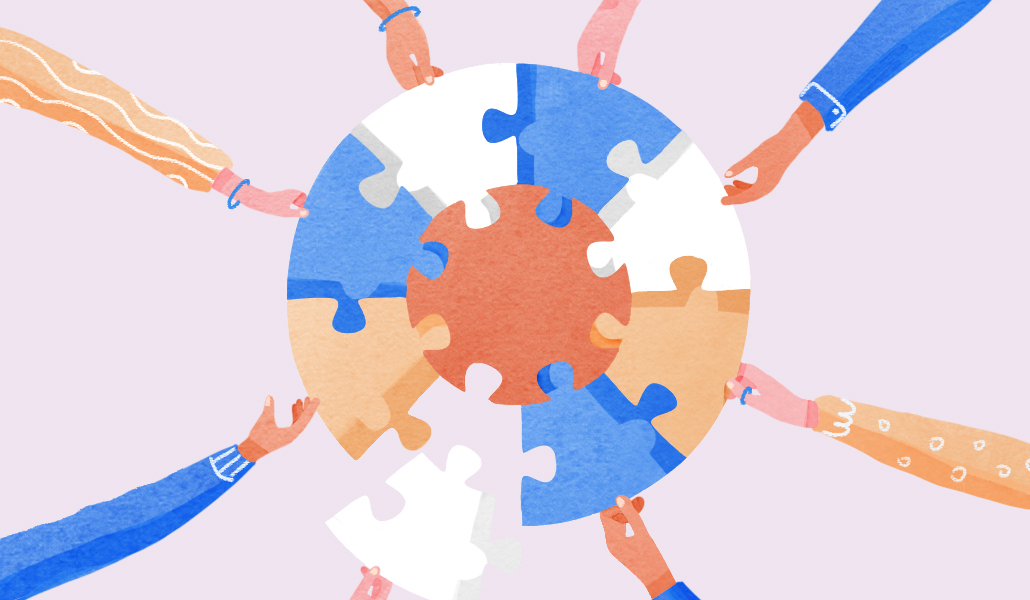What is the difference between inclusion and belonging?

DE&I has evolved into DEIB.
The “B,” for belonging, is an addition to diversity, equity and inclusion, a result of more workplaces focusing on what belonging means to them. As the landscape of work continues to evolve, the spotlight on DE&I has intensified, and most companies have a solid grasp on what that looks like for them.
“We’re now at a time where organizations are innovating from more inclusion and belonging tactics,” said Dave Wilkin, CEO of 10KC, a mentoring and networking platform for companies like Nike, GE and more. “We’re going to continue to see companies move to that end of it.”
However, experts say the last step to that is fostering a culture of belonging. But what exactly is the difference between inclusion and belonging? And why is it important to note?
Wilkin describes inclusion as having a seat at the table, but belonging is not only being at that table, but having your voice heard and valued.
“Many people can point to situations where they were invited as an underrepresented colleague to a meeting, but people didn’t really open the floor for those voices,” said Wilkin. “They just listened to the same voices. Inclusion is being in the room and having an opportunity to have the conversation. Belonging is when it’s obvious that people are explicitly making sure that those voices are valued.”
And that means even when it’s a contrary opinion.
“Belonging is being able to share a contrary opinion and not be penalized or judged for it, but it’s actually used to help expand the conversation,” said Christie Lindor, the founder of DEIB consulting firm Tessi Consulting and lecturer at Bentley University.
Lindor considers belonging as the outcome of practicing inclusion everyday, similar to trust.
“You can tell someone you trust them, but it’s only in your habits, where over time cumulatively you earn the right for someone to trust you,” said Lindor. “Over time your actions create that sense of belonging and safety.”
It’s clear that DEIB initiatives have an impact on the organization at large. It creates higher engagement rates and better retention rates, which in turn create enhanced revenue streams. Companies with diverse leadership and executive teams can see their profits increase by up to 33%. It also makes the workplace an attractive one to work at. A total 78% of people believe that DEIB offers a competitive advantage. On top of this, 80% of surveyed job seekers say that a commitment to DEIB is vital when choosing between employers.
“It creates better ideas and better cultures,” said Wilkin. But you can’t just stop at hiring diverse talent. “If the floor isn’t being opened to underrepresented groups, then all of the impact and reason that we are creating diverse organizations is not going to be tapped into.”
The companies 10KC works with asks their organizations to survey their managers and ask two questions: Do you feel like there’s value in diversity, equity, inclusion and belonging? That one is a resounding yes. The second one is: Do you know how to create inclusion and belonging within your teams? That is a lot lower.
It’s hard for companies to foster belonging when they aren’t sure what the difference is between that and inclusion. That’s why Wilkin says the next chapter for organizations is to ask if folks feel valued and like they belong. That’s done through building empathy, relationships, and networks with talent who might not look like you or be in the same role as you. An important part of that is a culture of psychological safety.
“An HR system might have a spot to share pronouns, but when you really have that sense of safety, value and support, they might share that in more ways than just changing their pronouns in the system,” said Lindor. “Employees feel like you’ve created an environment that they can show up authentically and fosters a sense of belonging.”
With psychological safety, it’s easier for people to learn from one another, and in turn, have that sense of belonging. Beyond being comfortable sharing different parts of your identity, it means that there aren’t repercussions for saying contrary opinions. It shows that any and all feedback matters from people at all levels.
“People are not going to always have the same thoughts or think about the same things,” said Lindor. “As a leader, how can you create a space so that those who are more introverted or more junior in their career have space to talk too?”
And there are other things a company can do to lean into belonging even more.
“Every organization now has anti-bias training widely available,” said Wilkin. “Every single person can take it. It might help with diversity and equity, but for them to get to inclusion and belonging on scale, it’s asking can every employee get access to mentoring and building networks? Are those experiences ones that guide people through the right conversations?”
For now, though, not every workplace is adding the “B” to “DEI.” Is that harmful for the evolution of this kind of work? Lindor says maybe because language is important.
“We started with just diversity,” said Lindor. “Diversity is just representation, and people think just race and gender. But true diversity is looking at all of the person’s identity. Then it was equity, and the difference between that and equality. Over time, it evolved into let’s make sure it’s inclusive. Now we’re seeing that maturity continue. Individuals are really starting to unlock the potential of their organization by hunkering down on inclusion and knowing how it creates an outcome of belonging.”


